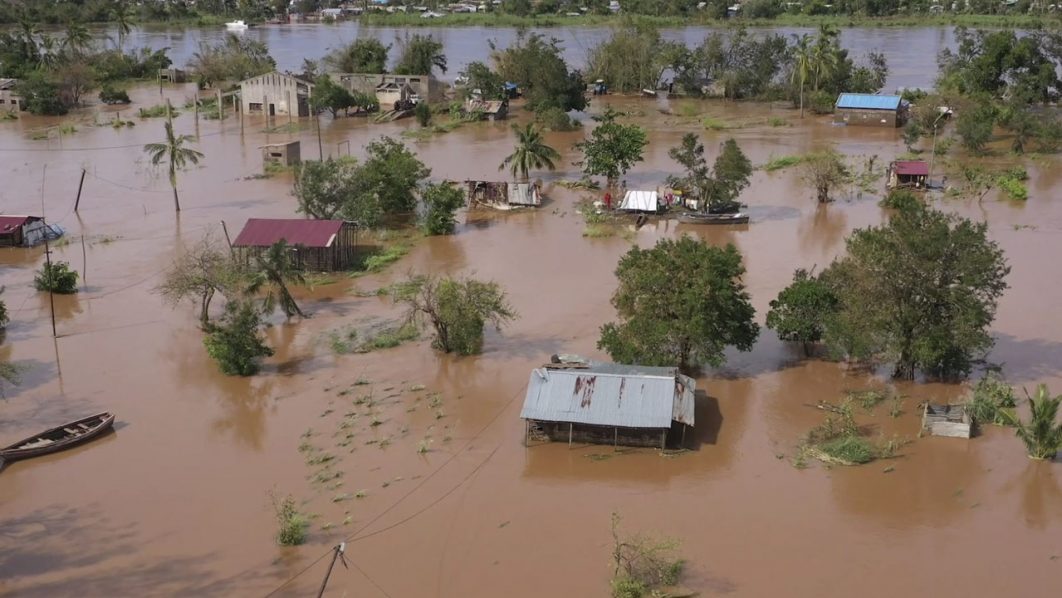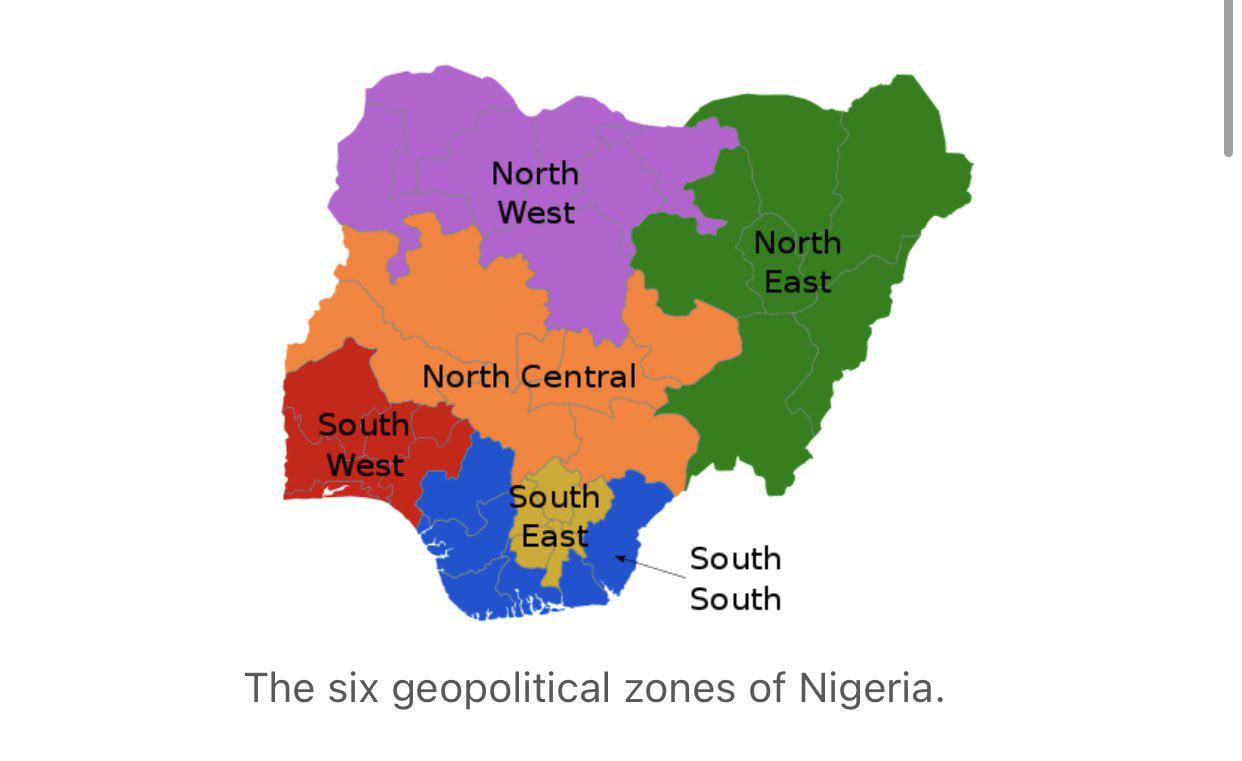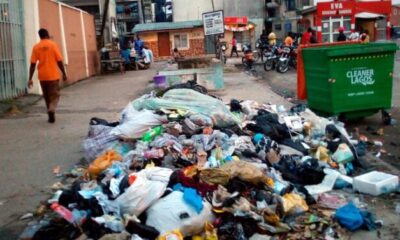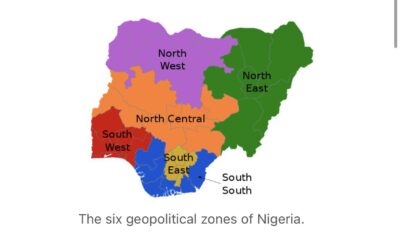Details have emerged on the reason behind the sudden resignation of a former Minister of Defence, Badaru Abubakar, after two years in office.
Badaru resigned his position on Monday, citing health concerns.
In his place, President Bola Tinubu swore in a former Chief of Defence Staff, General Christopher Musa (retd.) as the new Minister of Defence.
Announcing Badaru’s resignation, the Special Adviser on Information and Strategy to the President, Bayo Onanuga, said in a statement that the former minister stepped down on account of “poor health.”
However, findings by Saturday PUNCH showed that the former minister was compelled to resign following a protracted cold war between him and the Minister of State for Defence, Bello Matawalle, a rift that had been carefully kept away from the media for months.
Badaru was appointed on August 21, 2023, months after completing his two term tenure as Jigawa State governor.
His appointment reportedly rested on his administrative credentials and regional influence in the North West, a region grappling with escalating banditry and insurgency.
After being sworn in alongside other ministers, Badaru was said to have prioritised military modernisation, intelligence reforms and counter terrorism operations.
Tinubu also appointed Matawalle on the same day to support Badaru, the senior minister, in executing defence policies.
However, in recent weeks, the two men came under intense public scrutiny following the resurgence of bandit and terror attacks, which prompted Tinubu to declare a nationwide security emergency.
The worsening insecurity snowballed into mass abductions of schoolchildren, with dozens of pupils and students kidnapped across several northern states.
The student kidnappings heightened pressure on the former defence minister, with some analysts calling for his removal on the grounds that he was failing to lead the ministry effectively.
The security crisis also renewed global scrutiny of Nigeria’s security posture, especially from the Trump administration which, in late October, re-designated Nigeria as a Country of Particular Concern over the alleged mass killing of Christians.
Amid mounting public outrage, the defence minister tendered his resignation on December 1.
In separate interviews with Saturday PUNCH, credible military sources within the defence ministry said Badaru’s long-running animosity with Matawalle, rather than health concerns, ultimately forced him out.
An official of the ministry, who requested anonymity because he was not authorised to speak publicly, said the two ministers maintained a cordial appearance in public but had a “frosty relationship” behind the scenes.
“Matawalle and Badaru had a frosty relationship for most of the period he was minister, although they appeared cool with each other in public. But it is a known fact here that they had something against themselves,” the official said.
According to him, the tension affected some aspects of the ministry’s work, including media coordination.
“This affected some of their work. Even as a journalist, does the media unit look coordinated to you? Was this how it was being run before they came?
“Pairing the two together as ministers is something that ought not to have happened in the first place,” he added.
Another military source said it was believed that Matawale had a strong relationship with the presidency and was becoming domineering within the ministry.
The source noted that some party leaders within the All Progressives Congress considered Matawale as a political asset for the current administration, particularly within the north-western parts of the country.
“Matawale is from Zamfara State, and he has a very strong political presence in the state. The APC leaders see him as an asset for the 2027 election. So, they’re always on his side. He has the political backing and connection.
“But Badaru is weak, politically. The presidency does not actually reckon with him when it comes to power play and politics,” the source explained.
Calls for Matawalle’s resignation
Since Badaru resigned last week, some Nigerians, including activists and political commentators have amplified calls for Matawalle’s removal as Minister of State for Defence over the country’s security crisis.
Matawalle, a former Zamfara State governor, has faced periodic calls to step down, particularly from opponents in his home state.
In September 2024, Zamfara Governor Dauda Lawal publicly urged him to resign over alleged links to bandit groups, allegations Matawalle has repeatedly denied.
At the time, Lawal demanded that the minister cleared his name or resign.
Earlier, a petition by the APC Akida Forum also asked authorities to suspend Matawalle pending investigations into claims of collusion with criminal networks.
In November 2025, the Good Governance and Accountability Monitoring Group asked the President to fire the minister, accusing him of “complicity” and “poor performance” as insecurity persisted.
Despite the clamour, officials within the ministry said Matawalle might retain his office amid shakeups in the security establishment in the past two months.
Also, officials in the Presidency, who confided in our correspondent, said Matawalle was appointed as part of a broader, coordinated response to banditry.
They cited his recent assignment to Kebbi State after the abduction of 24 students from Government Girls Comprehensive Secondary School, Maga, where a joint operation led to the girls’ release.
Meanwhile, Matawalle was notably absent on Friday when Gen. Musa (retd.) formally assumed office at the Ministry of Defence, Abuja.
There was no official explanation for his absence as of press time.
Musa, who was sworn in on Thursday by President Tinubu, arrived at the ministry to a reception dominated by the service chiefs, the permanent secretary and other senior officials.
Musa to review theatre commands
The new defence minister announced that one of his first actions in office would be a comprehensive review of all theatre commands and inter-service operational structures across the country.
Musa spoke on Friday while addressing officials of the Ministry of Defence during his maiden briefing on assumption of office.
The former Chief of Defence Staff said the review was necessary to strengthen jointness among the services, close operational gaps and ensure strategic alignment between policy and field operations.
The minister also stressed that welfare would be treated as a strategic priority, not an administrative task.
He listed prompt payment of allowances, timely issuance of kits, improved accommodation, quality medical care and support for families of fallen heroes as areas that would receive urgent attention.
Musa said, “We must also confront a critical truth: welfare is not administrative; it is strategic. Morale is a force multiplier. Our personnel must receive their kits on time. Their operational allowances must be paid promptly.
“Accommodation, medical care, and support for injured personnel and families of the fallen must be priorities. Those on the frontlines watch how we treat their colleagues. If they feel abandoned, they cannot give their best. Anyone who risks his or her life for Nigeria deserves nothing but utmost respect.”
Musa said Nigeria could no longer afford disjointed or siloed security operations, emphasising that effective collaboration among the Army, Navy, Air Force and other security agencies was the only path to lasting success.
According to him, the ministry under his leadership would be guided by three pillars—operational effectiveness, unified action and strategic foresight.
“The threats we face are complex, but our spirit is stronger. No individual and no single service can achieve success alone. We must work as one Nigeria,” Musa added.
Musa promised zero tolerance for corruption, indiscipline and inefficiency within the ministry, noting that professionalism and integrity would define his tenure.
“I expect the highest standards of professionalism, integrity, and urgency. We do not have time to waste. We must respect human rights, avoid mistakes where possible, and when they occur, correct them decisively. I will always welcome candid advice and robust debate, but once a decision is made, we must move as one team.”
He also pledged to deepen the use of technology, intelligence and data-driven planning in defence operations while strengthening partnerships with allies and domestic security agencies.
“I am not here to preside. I am here to lead, to work and to deliver,” he declared.
He assured the service chiefs of his full cooperation and urged the civil service structure of the ministry to uphold diligence in translating military objectives into implementable policies.
Musa added that Nigerians were yearning for peace, security and stability, stressing that children must return to school and farmers to their farms.
“The shedding of innocent blood must end. Our children deserve to return to school. Farmers must return to their farms. Many of these issues require both kinetic and non-kinetic solutions—justice, equity, fairness, and good governance. We will pursue a comprehensive, balanced approach. The Nigerian people are looking to us for results—and we must deliver,” he said.
punch.ng
FOLLOW US ON:

































